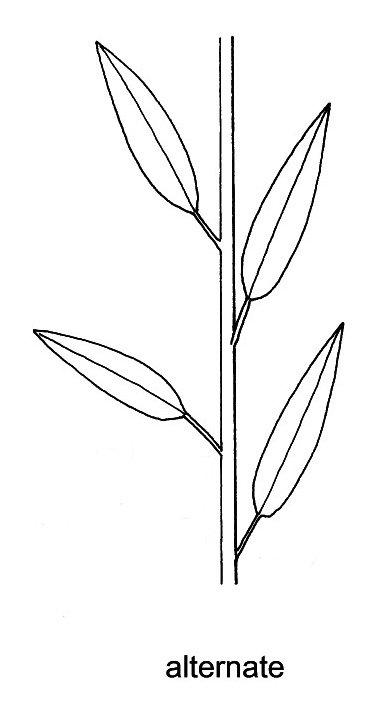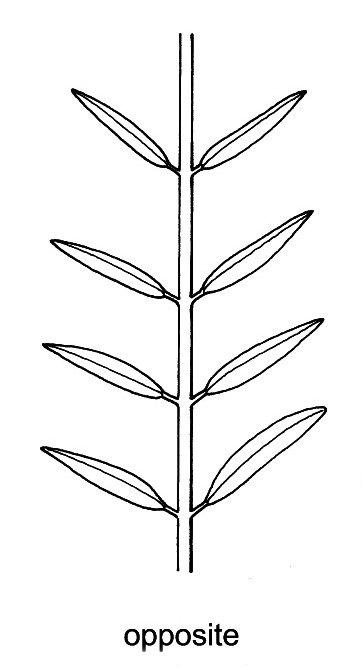|
|
 |
Key to IrisView taxon page for Iris
(For a list of species in Iris, use the above link.) Jepson Manual glossary definitions can be seen by moving your cursor over words underlined with dots. 1' Sepal not obviously bearded 3. Cauline leaves bract-like 4. Perianth pale cream-yellow with prominent brown-violet veins, rose-violet with darker veins, or ± white with rose veins; stigmas truncate  Abruptly (not gradually) narrower or smaller at base or tip, as if cut straight across or nearly so. , ± rounded, or 2-lobed ..... I. purdyi 3' Cauline leaves similar to basal  At or near the base of a plant or plant part. Especially said of leaves clustered near the ground or of a placenta confined to the base of an ovary. 5. Stigmas tongue-shaped, tip rounded; rhizome  1. In seed plants, stem that is often elongate, more or less horizontal, usually underground; distinguished from roots by bearing of leaves, leaf scars, axillary buds, etc. 2. In ferns, stem that is located underground, embedded in leaf litter, on rocks or in rock crevices, or on trees or tree branches, often scaly or hairy; distinguished from roots by bearing of fronds (roots rarely bear fronds), and their greater diameter. 2–5 mm diam 6. Stigmas entire  Having margins that are continuous and smooth (i.e., without teeth, lobes, etc.). ; perianth parts elliptic  In the shape of a flattened circle or ellipse; wider than linear or narrowly elliptic; stem generally < 1 dm ..... I. chrysophylla 5' Stigmas triangular, tip acute  Having a short-tapered, sharp tip, the sides convex or straight and converging at less than a right angle. ; rhizome 4–9 mm diam 7. Perianth tube funnel-shaped  Widening from the base more or less gradually through the throat into an ascending, spreading, or recurved limb; often applied to a fused calyx or corolla. ; basal leaves >= 6 mm wide ..... I. fernaldii 8. Stigmas 2-lobed; rhizomes 9–30 mm diam; cauline leaves bract-like for at least 2/3 length 9. Lowest bracts alternate  1. Arranged singly, often spirally, along an axis - e.g., one leaf per node. 2. Occurring in different ranks, appearing to be between, not directly above or below, as 'stamens alternate petals'. ; moist, coastal prairie or open coastal forest; flowers 3–6, lilac-purple ..... I. longipetala 9' Lowest bracts opposite  1. Arranged in pairs along an axis - e.g., two leaves per node. 2. Occurring in the same rank, directly above or below, as 'stamens opposite petals'. 3. Located directly across from. ; seasonally wet sites; flowers 1–2, pale lilac to ± white, or 2–9, brown, red-brown, or green 10. Basal leaves 25–35 mm wide; bracts not scarious; flowers 2–9, pale yellow to brown, red-brown, or green, veined green or red-brown ..... I. foetidissima 10' Basal leaves 3–9 mm wide; bracts generally scarious; flowers 1–2, pale lilac to ± white, veined lilac-purple ..... I. missouriensis 8' Stigmas triangular, tongue-shaped, or rounded; rhizomes 1–12 mm or 30–40 mm diam; cauline leaves bract-like or similar to basal 11' Stigmas triangular or tongue-shaped; basal leaves 2–20 mm wide; rhizomes 1–12 mm diam; dry slopes (moist meadows) 12. Cauline leaves bract-like for at least 2/3 of length 13' Perianth tube > 10 mm; cauline leaves generally not overlapped; flowers 1–2 14. Lowest bracts spreading  Oriented more or less perpendicularly to the axis of attachment; often, more or less horizontal. ; ovary triangular, clearly winged 14' Lowest bracts enclosing perianth tube; ovary rounded or triangular, not winged 16' Flowers generally lavender to blue, occasionally ± white; ovary triangular; petals obovate ..... I. thompsonii 12' Cauline leaves similar to basal 17. Flowers pale cream to yellow or gold-yellow, veined gold or bright yellow or not 18. Flowers 3; outer bract  Reduced, leaf- or scale-like structure subtending a branch, cone scale, peduncle, pedicel, or flower. 9–15 cm; perianth tube 11–15 mm ..... I. hartwegii subsp. columbiana 17' Flowers blue to lavender or purple (white or pale cream), with cream or ± white throat or not 19' Basal leaves 10–22 mm wide; flowers generally > 2; grassy sites
Please use this Google Form for Contact/Feedback
Citation for the whole project: Jepson Flora Project (eds.) . Jepson eFlora, https://ucjeps.berkeley.edu/eflora/ [accessed on ]
Citation for an individual treatment: [Author of taxon treatment] [year]. [Taxon name] in Jepson Flora Project (eds.) Jepson eFlora, [URL for treatment]. Accessed on .
We encourage links to these pages, but the content may not be downloaded for reposting, repackaging, redistributing, or sale in any form, without written permission from The Jepson Herbarium.
|
|
 |

